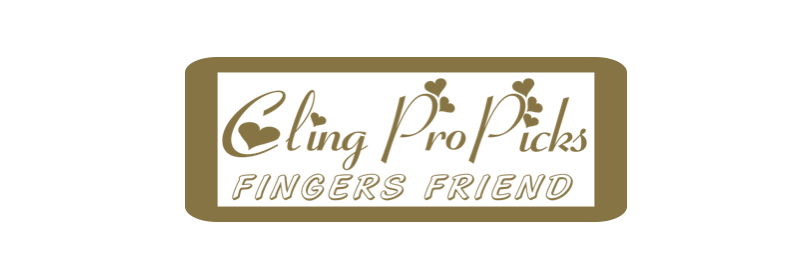Those with whom I’ve had discussions about tempered or “sweetened” tunings for autoharp can testify that I’m not shy about my preference for Equal Temperament tuning. But for those who might wonder why (and because the subject seems to come up frequently), here’s my take.
For those who are unfamiliar with these terms, here is a very abbreviated explanation. ‘Sweetened’ tunings, whatever their derivation, are tuning methods that are designed to improve the way that certain notes sound when played together. The tunings are based upon intervals — not the notes themselves, but the spaces (intervals) between them. When appropriately applied, these tunings adjust the spaces between certain notes so that said notes will sound better together. For instance, there is an ideal amount of space between a root note (e.g. G) and the fifth note above it (D). When this distance is adjusted perfectly, the two notes (when played together) sound very good, and the resulting chords using these notes are enhanced. However, this adjustment then leads to necessary changes in the distances (intervals) between the other five notes in the scale so that all the other possible interval combinations will sound good. The end result of adjusting these intervals to favor fifths, thirds, etc. — is that you end up with some great-sounding chords. And others that aren’t so hot. And, unfortunately, maybe even one or two that are downright painful. Sweetened tunings are a compromise. You gain some very sweet-sounding chords at the expense of others. Equal Temperament tuning involves compromise as well. With Equal Temperament tuning, each note is exactly the same distance apart. But in reality, the correct distance (interval) between each true (i.e. pure) note in the scale is slightly different. In order to make it easier for instruments of all types to play reasonably well together, Equal Temperament was developed — which divided the 12 notes in the western musical scale so that there are equal distances (intervals) between each note. Bottom line, no matter which type of tuning you choose for your autoharp (ET or Sweetened), you have to accept some level of dissonance. The sweetened tunings are attractive to many because they do make certain chordal combinations sound very nice indeed.
But playing the autoharp isn’t just about playing chords. Not for me, anyway. I play single-note melody with chords used mainly as accompaniment.
Exhibit A: The G major scale, with “Just Intonation” (one of many popular sweetened tunings) applied:
G 0
A +4
B -14
C -2
D +2
E -16
F# -12
Let’s take the tune, “Patty Ann”. The melody line is complex and uses every single note in the G scale within the first 6 measures. My playing style is to play each note of the melody individually (single string pluck) and make it ride above the underlying chord or chords, changing chords only when absolutely necessary by using open-noting techniques for the melody. If I were to employ this tuning, the B, E and F# notes would sound horrendously flat. In addition, the Bm and Em chords (essential fixtures in this song) would sound w-a-a-y off.
I had a very unpleasant experience recently after tuning up four autoharps just prior to a stage set. My tuner has about 50 different sweetened tuning options built into it which are all-too-easily accessed when not paying close attention (or not wearing appropriate corrective eyewear). The first three ‘harps I used in the set sounded great, but when I picked up the fourth ‘harp and started playing (“Patty Ann”, as it happened), my blood ran cold. It was off. REALLY off. A thousand thoughts ran through my head at that point, but I couldn’t do anything about it so I finished the set and prayed that no one noticed. I discovered afterward that I must have used one of the ‘sweetened’ tuner settings on this last ‘harp by hitting the “on” button twice instead of once. When I went back to re-tune it after the set, I noticed that the changes were very minimal (only 4 cents, if I remember correctly) and the changes only involved one or two notes. But that small change was enough to leave me shaking in my boots. As a result, I absolutely cannot fathom playing a melody line where three out of the seven notes are so flat they’re flirting with the next note a half-step down. Such would be the case with the “Just Intonation” adjustments listed above. There are other sweetened tuning variations that involve smaller adjustments, but none I have tried (yes, I have tried many different tunings) gave better sounding chords without making the autoharp sound out of tune when playing single-note melody.
The autoharp seems to have settled into an existence as a purely chording instrument. Melody playing is employed by the majority of players, but the style of melody playing that I see most commonly used today is based heavily (if not entirely) upon chords. In other words, the entire chord is often played along with each melody note. These sweetened tunings are intended to make certain chords sound better, and they do. But for those of us who play the autoharp more like its direct ancestor, the zither, with less emphasis on chords and heavy emphasis on single-note playing, this type of tuning can have unintended and unpleasant consequences. It would be very enlightening to know if zither players use any type of sweetened tunings. Judging by what I’m hearing and seeing from the zither music videos up on YouTube, I can only say that IF sweetened tunings are employed on zithers, they’re very, very subtle. In summary, I’m not against people using Sweetened Tunings for the autoharp. However, I do not use them. As always, ‘Your Mileage May Vary’.
